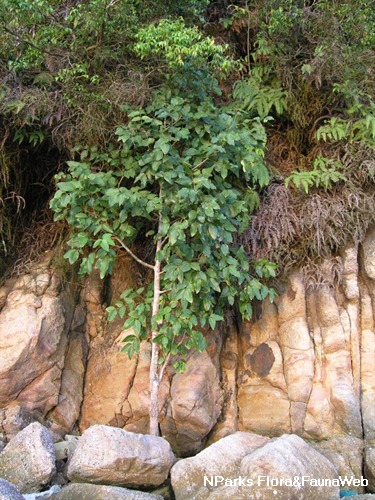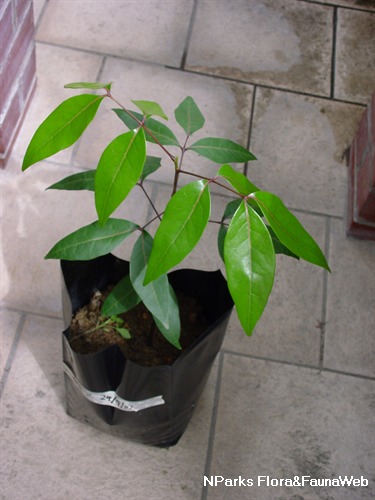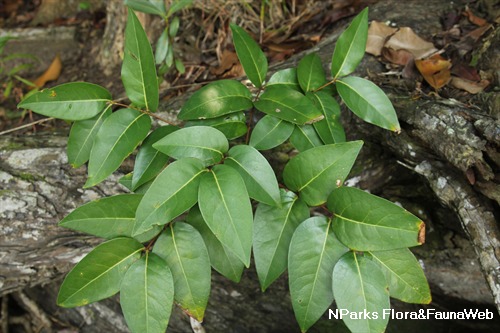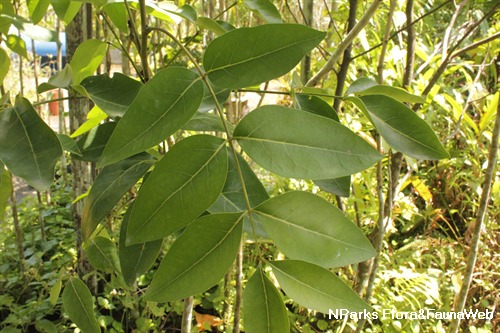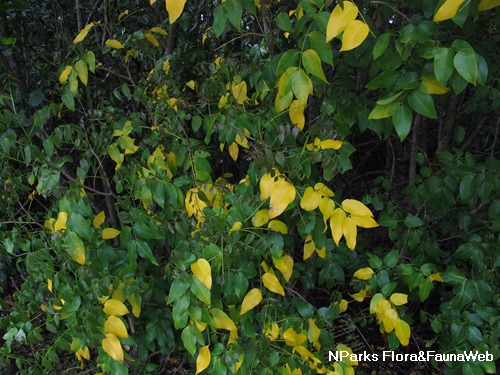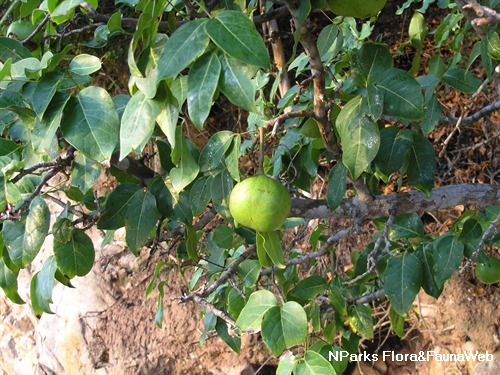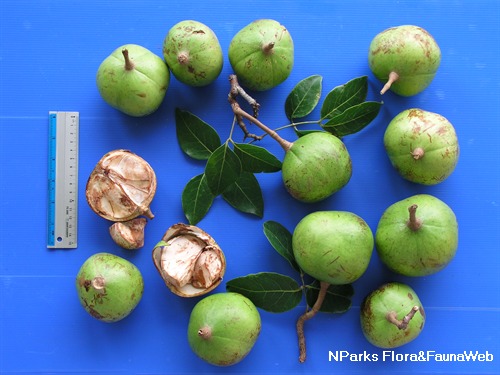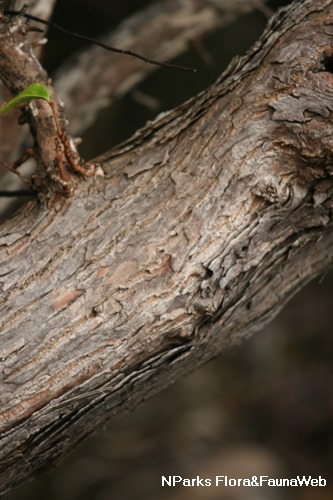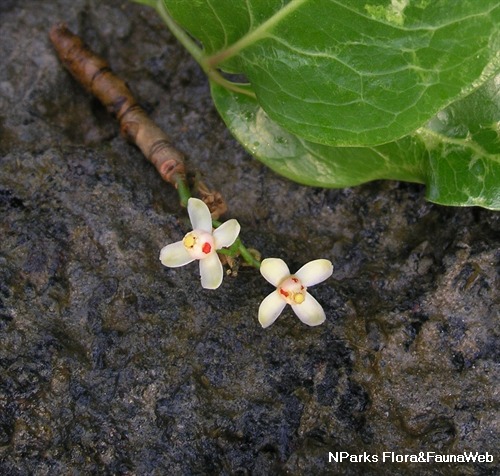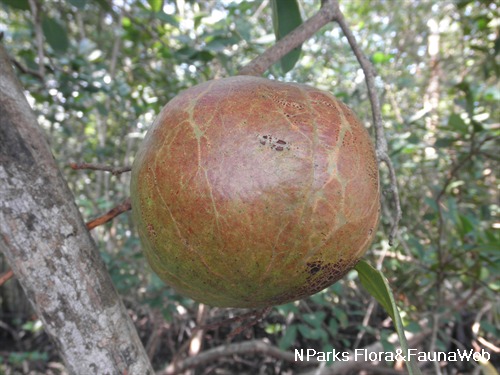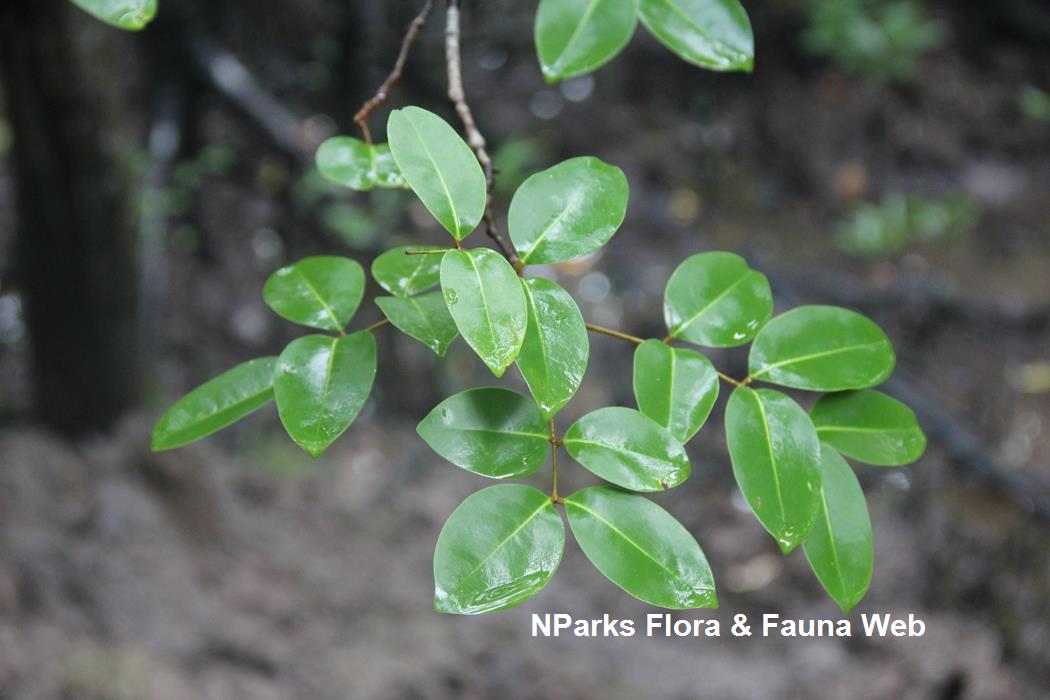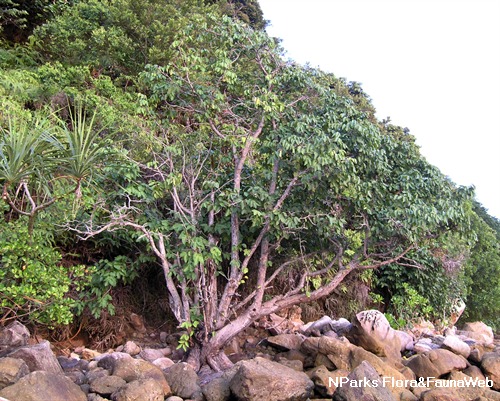
Name
Classifications and Characteristics
| Plant Division | Angiosperms (Flowering Seed Plants) (Dicotyledon) |
|---|---|
| Plant Growth Form | Tree (Small (6m-15m)) |
| Lifespan (in Singapore) | Perennial |
| Mode of Nutrition | Autotrophic |
Biogeography
| Native Distribution | Southeast Asia, Old World tropics from East Africa to Tonga |
|---|---|
| Native Habitat | Shoreline (Mangrove Forest, Coastal Cliff, Rocky Beach) |
| Preferred Climate Zone | Tropical, Sub-Tropical / Monsoonal |
| Local Conservation Status | Native to Singapore (Critically Endangered (CR)) |
Description and Ethnobotany
| Growth Form | Medium sized tree, height range 4 - 12 m, approx. 18 at maturity. |
|---|---|
| Trunk | Trunk can be up to 50 cm in diameter. Bark finely fissured, greyish, inner bark bright pink to red. |
| Roots | No conspicuous buttresses and pneumatophores. |
| Foliage | Leaf stalk up to 22 cm, leaflets in 2 - 4 pairs, 5 - 10 by 3 - 5 cm, ovate to heart-shaped with pointed tip, venation prominent on both sides, leaflet stalk 1 - 3 mm. |
| Flowers | Flower clusters 10 - 18 cm long, lax and hanging. Calyx 4 lobes 1 - 1.5 mm long, 4 petals 3.5 - 6 by 2 - 2.5 mm, elliptic-oblong, creamy white. |
| Fruit | Fruits 6 - 8 cm in diameter and round in shape. |
| Habitat | Exposed shores, rocky cliffs, often near the surf, and near sandy substrates above the high water mark. |
| Associated Fauna | Host plant for Attacus atlas (Atlas moth). |
| Etymology | Xylocarpus, in Latin means woody fruit, rumphii is named after German-born botanist Georg Eberhard Rumphius. |
| Ethnobotanical Uses | Edible Plant Parts : Edible Seeds Medicinal: Kernel of seeds used to treat stomach aches Timber & Products: Patterned wood used for handles of traditional knives. Bark is used for tanning and dying cloth. Wood is used for boat building. |
Landscaping Features
| Desirable Plant Features | Ornamental Flowers |
|---|---|
| Landscape Uses | Coastal, Beachfront / Shoreline |
| Usage Hazard - Cons | Large Heavy Fruits |
Fauna, Pollination and Dispersal
| Fauna Pollination Dispersal Associated Fauna | Butterfly Host Plant, Caterpillar Moth Food Plant |
|---|---|
| Pollination Method(s) | Biotic (Fauna) |
| Seed or Spore Dispersal | Abiotic |
Plant Care and Propagation
| Light Preference | Full Sun, Semi-Shade |
|---|---|
| Water Preference | Moderate Water |
| Plant Growth Rate | Moderate |
| Rootzone Tolerance | Moist Soils, Saline Soils / Salt Spray |
| Propagation Method | Seed |
Foliar
| Mature Foliage Colour(s) | Green |
|---|---|
| Mature Foliage Texture(s) | Leathery |
| Foliar Type | Compound |
| Foliar Arrangement Along Stem | Opposite |
| Foliar Attachment to Stem | Petiolate |
| Foliar Venation | Pinnate / Net |
| Foliar Margin | Entire |
Non - Foliar and Storage
| Mature Bark Texture | Fissured |
|---|
Floral (Angiosperm)
| Flower Grouping | Cluster / Inflorescence |
|---|
Fruit, Seed and Spore
| Mature Fruit Colour(s) | Green |
|---|---|
| Mature Seed Colour(s) | Brown |
| Seed Quantity Per Fruit | Moderate (6-10) |
Image Repository
Others
| Master ID | 1918 |
|---|---|
| Species ID | 3210 |
| Flora Disclaimer | The information in this website has been compiled from reliable sources, such as reference works on medicinal plants. It is not a substitute for medical advice or treatment and NParks does not purport to provide any medical advice. Readers should always consult his/her physician before using or consuming a plant for medicinal purposes. |

